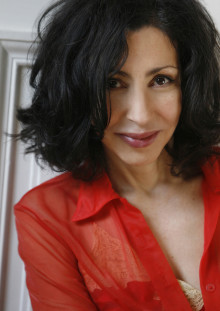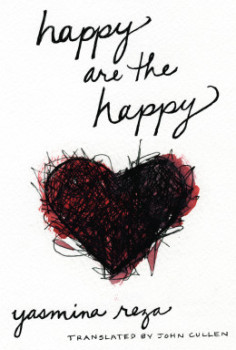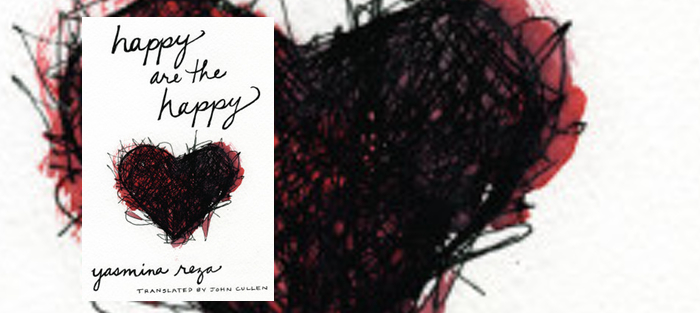For me, plot has always been an especially puzzling aspect of fiction writing. I can tell a story, but making that story entirely believable through plot? That’s the rub. As a literary scholar with a PhD (versus, say, an MFA), it took me longer to wrap my mind around plot as a concept than it might have otherwise—my scholarly focus has been on narrative, which of course got me into all kinds of trouble as a fiction writer. How a story is told—in other words, narrative—is different from the events and moments that fit together to create a wholly believable progression of interlocking points, which we might call plot. As E.M. Forster’s famously put it in Aspects of the Novel, “‘The king died and then the queen died,’ is a story. ‘The king died, and then the queen died of grief,’ is a plot.” I can explain plot, I think. But the real test is: how do I construct one?
The trick for me is this: narrative—how a story is told—plays a crucial role in contemporary Francophone literature, my area of specialization. While I consider the term Francophone a contestable one, I’ll define it here as French-language writers of non-French ethnicity who were born and educated outside of the spheres of French social privilege, whether in France or in one of the former colonies. Francophone writers often explode European storytelling structures, especially where the novel is concerned. Many of these writers—Moroccan Abdelkebir Khatibi, the recently passed Algerian feminist Assia Djebar, and Congolese Alain Mabanckou, to name a few—are recognized masters of the French language and thoroughly versed in the French canon. So these writers turn the concept of “masterful writing in French” on its head, undermining the expectations of the novel as form by borrowing from traditions of African or Middle Eastern oral storytelling, poetry, and beyond, to both aesthetic and political ends. How stories are told—again, this is narrative—can be riveting. But it isn’t plot.
 So I’ll admit, as a literary critic I’ve been a bit distracted from the craft of plot. It’s taken me a bunch of meandering and stumbling around to figure out how to even read for the craft of plot in Francophone novels. So when I read John Cullen’s recent translation of Happy are the Happy by playwright, novelist, and actress Yasmina Reza (I should note that Reza is a born-and-bred French citizen of Jewish Russian, Iranian, and Hungarian descent), I was delighted to note that within the book’s webbed narrative structure, there was a carefully constructed plot, one that could be read like exploring a new body.
So I’ll admit, as a literary critic I’ve been a bit distracted from the craft of plot. It’s taken me a bunch of meandering and stumbling around to figure out how to even read for the craft of plot in Francophone novels. So when I read John Cullen’s recent translation of Happy are the Happy by playwright, novelist, and actress Yasmina Reza (I should note that Reza is a born-and-bred French citizen of Jewish Russian, Iranian, and Hungarian descent), I was delighted to note that within the book’s webbed narrative structure, there was a carefully constructed plot, one that could be read like exploring a new body.
This surprised me because the book jacket of Happy are the Happy (Other Press) opens with an explanation: “Schnitzler’s la Ronde gives these twenty short chapters their shape, while Borges’s poem gives them their content.” (Each chapter in the novel is narrated by a different character in the first person, and the mise en scène in each chapter is in media res.) So I entered into reading Happy thinking that my review would be more of a study in form, style, or character.
But the intense physicality of the first characters to be introduced, husband Robert and wife Odile Toscano, suggests plot unfolding: tension builds in their actions, and in their bodies’ interactions, and from that tension arises the significance of the events within the scene. Chapter One is narrated by Robert, who is at the supermarket with Odile. They are arguing about whether or not to wait in the cheese line, although the argument really has nothing to do with cheese: on first blush, it seems that this chapter is simply a portrait of the wear and tear on a long marriage. In a moment near the end of Robert’s narrative, he shoves Odile against the Plexiglass-fronted cheese counter to take his keys from her purse. Portrait of an abusive relationship, as well? But not so fast: there’s something in Odile’s words and actions that leave us with the impression that perhaps this potentially disturbing scene of domestic aggression could be staged:
I pull both Odile and the cart, I haul them past the shelves and the racks toward the checkout counters. I keep a tight grip on her wrist even though she’s not putting up any resistance, there’s nothing innocent about her submission, I’d rather she forced me to drag her.
They leave the grocery store and get into their car in “mutual silence,” and the last words from Robert’s point of view are “I put on the CD with the Portuguese song, the one with the woman’s voice repeating the same word over and over.” Were we expecting worse? Reza has taken us to the edge of something ugly, but in the moment of highest tension—“I pull/I haul/I keep a tight grip”—pitches a momentary rest: “she’s not putting up any resistance.” Reading those lines, I can feel my hand as if it were Robert’s, reading Odile through flesh and bone rather than action or word. The lack of resistance that Robert perceives in Odile’s wrist leaves me wondering: what exactly is going on between these two characters? It is with this passage that I begin to see: in Happy are the Happy, part of what is plotted is the unseen depths of the relationship. Had this scene not been written from Robert’s point of view, that resistance on Odile’s part may have gone unseen.
But the reader will have to wait to learn more about Odile and Robert: Chapter Two is narrated by Marguerite Blot, departing from Odile and Robert’s story. Knowing that Ernest Blot is Robert’s father-in-law, a reader might assume, as I did, that Marguerite is Odile’s mother. But it becomes clear a few pages into this chapter that she is, in fact, Odile’s aunt. Though this initial misunderstanding can lead one to interesting reflection, for it is through Marguerite that the reader begins to realize that plot in Happy are the Happy turns on the differences between what we see on the outside, in public, between two people, and what they experience together, inside, in private—in the smallest of gestures, like Robert’s hand on Odile’s arm. In this instance, for example, what the public sees and interprets as transpiring might not, in fact, be an accurate representation of the situation, were they aware of the inner lives and histories at work.
Marguerite’s story begins in an unnamed place. Her narrative opens:
In the distant era of my marriage, in the hotel where we would go as a family in the summer, there was a woman we would see every year. A cheerful, elegant woman with a sporty cut to her gray hair.
The woman vacationed alone, Marguerite relates, but one year, she arrived with a “tall brunette woman wearing an airy skirt.” Marguerite continues:
Une dame de compagnie, I was told: a lady companion. I accepted the designation as one accepts an ordinary word, a word without a specific connotation. The two women appeared every year at the same time… In due course, a dog was added to their party.
Marguerite never uses the word “lesbian” to describe this couple, but at first, the anecdote tells us something about how the women comport themselves with grace and ease as they go about their lives, which at their core must go unspoken.
Yet Marguerite turns this interpretation on its head: her next anecdote is about vacationing at a ski resort with her grown son.
He skis, of course, with his friends, and I walk. […] One shouldn’t walk too far alone in the mountains and the snow. I laughed, thinking I ought to put up an ad at the reception desk: Single woman seeks someone pleasant to walk with. Anyway, I immediately, thought about Madame Compain and her lady companion, and I understood what it meant to be une dame de compagnie. My understanding frightened me, because Madame Compain had always struck me as a woman who was a bit lost. […] I can’t become a Madame Compain!
So the nature of the two women’s relationship isn’t the point, the reader begins to realize: rather, Marguerite is worried that she has become someone lost, someone who must solicit companionship. Her anxiety is about aging. Note, as well, the names: in the original French, “Compain,” her surname, and “compagnie” of dame de compagnie share an etymology with the word “copain,” or friend (literally, someone with whom—co—to share bread—pain). So Marguerite’s anxieties transform into being about intimacy and social acceptance. Her narrative then turns to her brief affair with the “last man [she] fell in love with,” and the difference between their physical intimacy in private and his distance from her at the high school where they both teach. Marguerite’s musings, in the end, suggest the desire for her public life to match her private life, for her intimates to be out in the open.
 Remember my misunderstanding about Marguerite’s relationship to Odile? It is after the story about Marguerite’s lover that her role becomes clear: she refers to Odile’s father as “my brother, Ernest.” For me, this is another pivotal moment in understanding Reza’s plot: Marguerite’s mention of Ernest serves as a bridge, reminding me of Robert in Chapter One, which makes it easier to place Odile, the narrator of Chapter Three. And it’s a further illustration of how relationships go unspoken or can be articulated, an embodied moment for me as a reader: I thought Marguerite and Odile were mother and daughter, when they are actually aunt and niece. Seemingly banal, but considering the range of other relationships that have already been described in the novel, Marguerite’s clarification helps me experience what the characters are experiencing. No relationship is entirely transparent. More important, our understandings of relationships evolve and shift—knowledge dawns on us, bit by bit with new information, context, and different points of view. How two bodies interact in unseeable places and ways can tell an entire story, whether particular (Robert and Odile as a weary couple whose embers are nonetheless still giving off small sparks) or universal (Marguerite and Odile as aunt and niece, not mother and daughter).
Remember my misunderstanding about Marguerite’s relationship to Odile? It is after the story about Marguerite’s lover that her role becomes clear: she refers to Odile’s father as “my brother, Ernest.” For me, this is another pivotal moment in understanding Reza’s plot: Marguerite’s mention of Ernest serves as a bridge, reminding me of Robert in Chapter One, which makes it easier to place Odile, the narrator of Chapter Three. And it’s a further illustration of how relationships go unspoken or can be articulated, an embodied moment for me as a reader: I thought Marguerite and Odile were mother and daughter, when they are actually aunt and niece. Seemingly banal, but considering the range of other relationships that have already been described in the novel, Marguerite’s clarification helps me experience what the characters are experiencing. No relationship is entirely transparent. More important, our understandings of relationships evolve and shift—knowledge dawns on us, bit by bit with new information, context, and different points of view. How two bodies interact in unseeable places and ways can tell an entire story, whether particular (Robert and Odile as a weary couple whose embers are nonetheless still giving off small sparks) or universal (Marguerite and Odile as aunt and niece, not mother and daughter).
This brings us to Odile, who narrates Chapter Three, in which we witness the couple have a bedtime fight after a dinner party. Robert gets dressed and threatens to leave her—but he is interrupted when their son, Simon, wakes up crying because his stuffed dog is lost. The search for the dog and comforting Simon diverts attention from the argument, and the chapter ends with the Toscanos spooning in bed. No queen has died of grief here; Reza’s plot is less of a yarn than sinew, muscle, flesh. Plot in Happy are the Happy, thus, is guided by the body: measurements of proximity, how we read one another in the most intimate of moments, moments perhaps unseen even by those closest to us. The opening chapter’s domestic drama sets the stage for the novel’s denouement at Odile’s father’s (Robert’s father-in-law, and Marguerite’s brother’s) crematory funeral and the outing to spread his ashes. In between, the plot thickens like worked muscles around other narrators, each of whom is introduced secondhand in earlier chapters, like the Hutners in Robert’s opening chapter.
I’m not giving anything away to say that Odile and Robert are still together at the novel’s end. There are no major changes or cataclysms in these characters’ lives, at least not those brought on by divorce or separation. That is one of the aspects that make plot such an interesting object of consideration in Happy are the Happy: it’s tremendously subtle. And it’s not a coincidence that the characters in this novel are predominantly Jewish, a part of one of France’s most haunting and haunted minorities. Much like Exodus, Happy are the Happy leads us not to triumph and satisfaction but to further negotiations with those around us. There is no mention of the Holocaust here—cremation is far more common in France than it is in the United States—and yet, given the generation who is passing on, the novel is indeed haunted by the spectre of the Shoah.
And so—arriving at an aspect of Reza’s work that I havenot yet mentioned—maybe all you can do is laugh. Here is Ernest, some chapters later:
I feel worn out and stooped, I’m squinting in spite of my glasses. I gaze at my hand as it wanders the tabletop, clutching the tool called a mouse, part of my body’s struggle with a world to which it no longer belongs. The other day my grandson Simon said, old folks are people from the past stuck in the future. That kid’s a genius.
Tell me that in reading this passage, you didn’t at least smile.
When the muscles tighten and loosen in laughter,we appear to be happiest in the body. Those who appear to be the happy are the happy in these moments. Laughter relieves tension, laughter lightens a load, even if it’s just for a moment. And that is another aspect of Reza’s plot, story, and narrative: both characters and readers are meant to laugh, to be present, to realize that both the story and its telling come down to the fact that we are here, together, for better or for worse—in the flesh.






